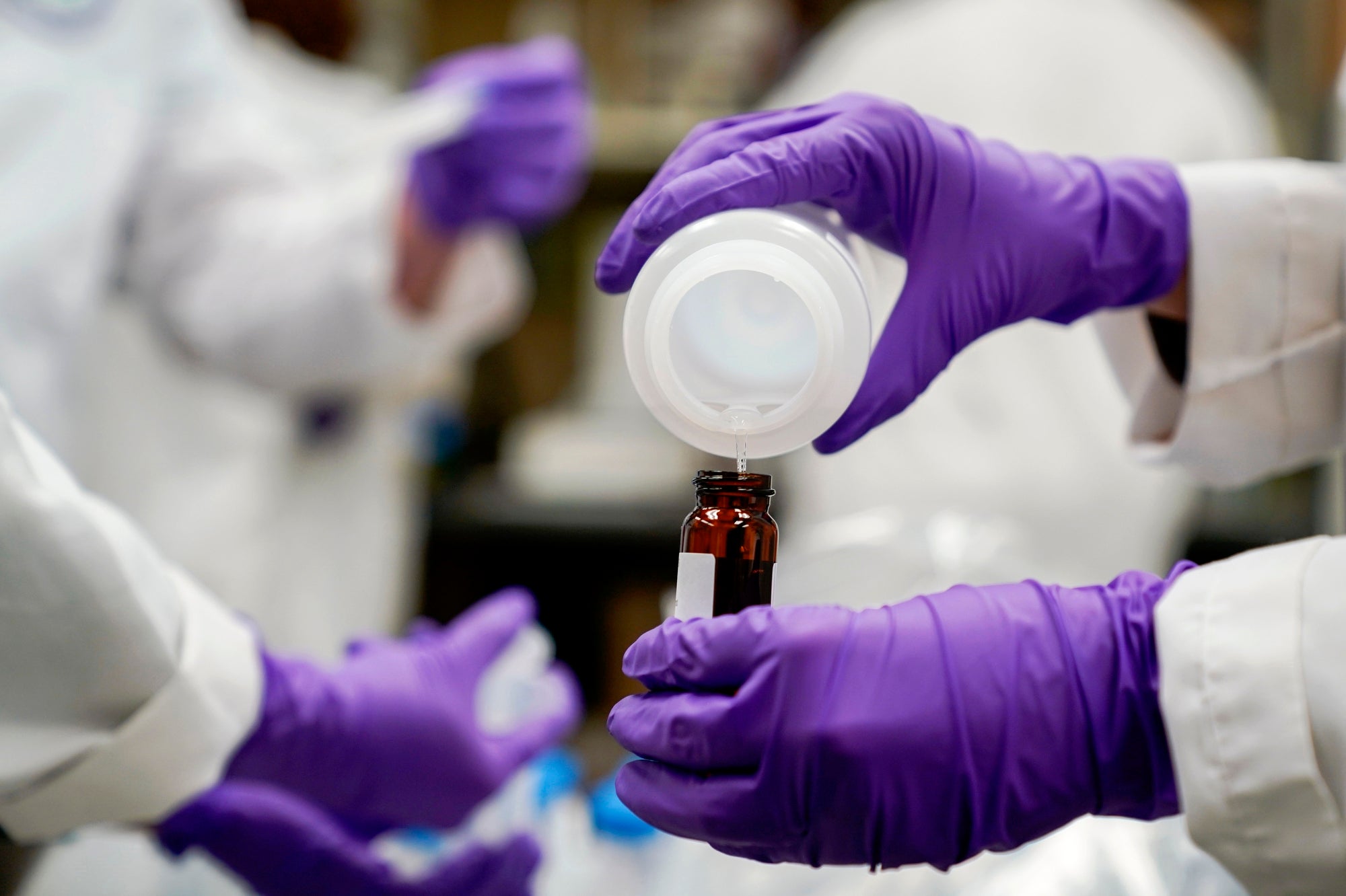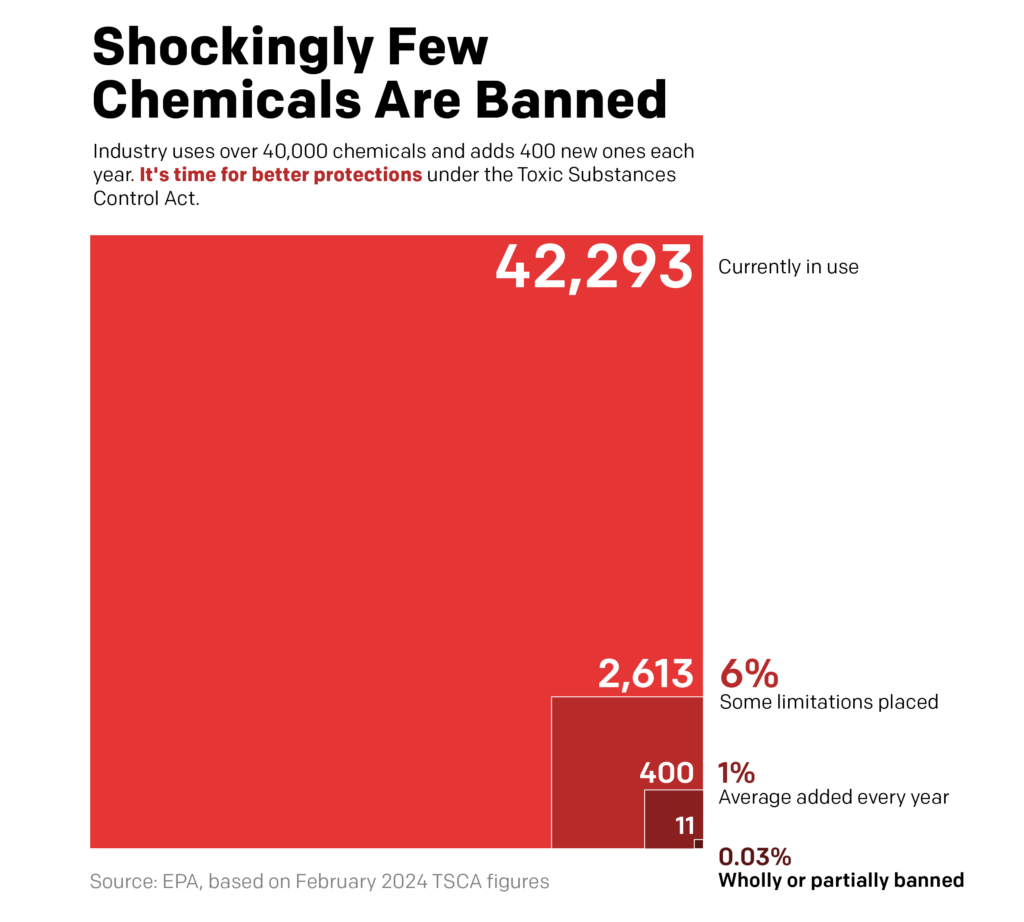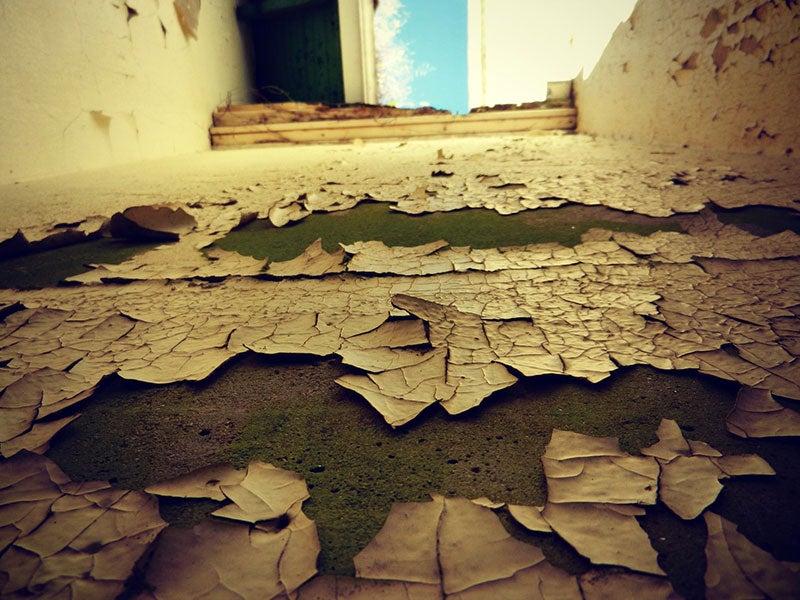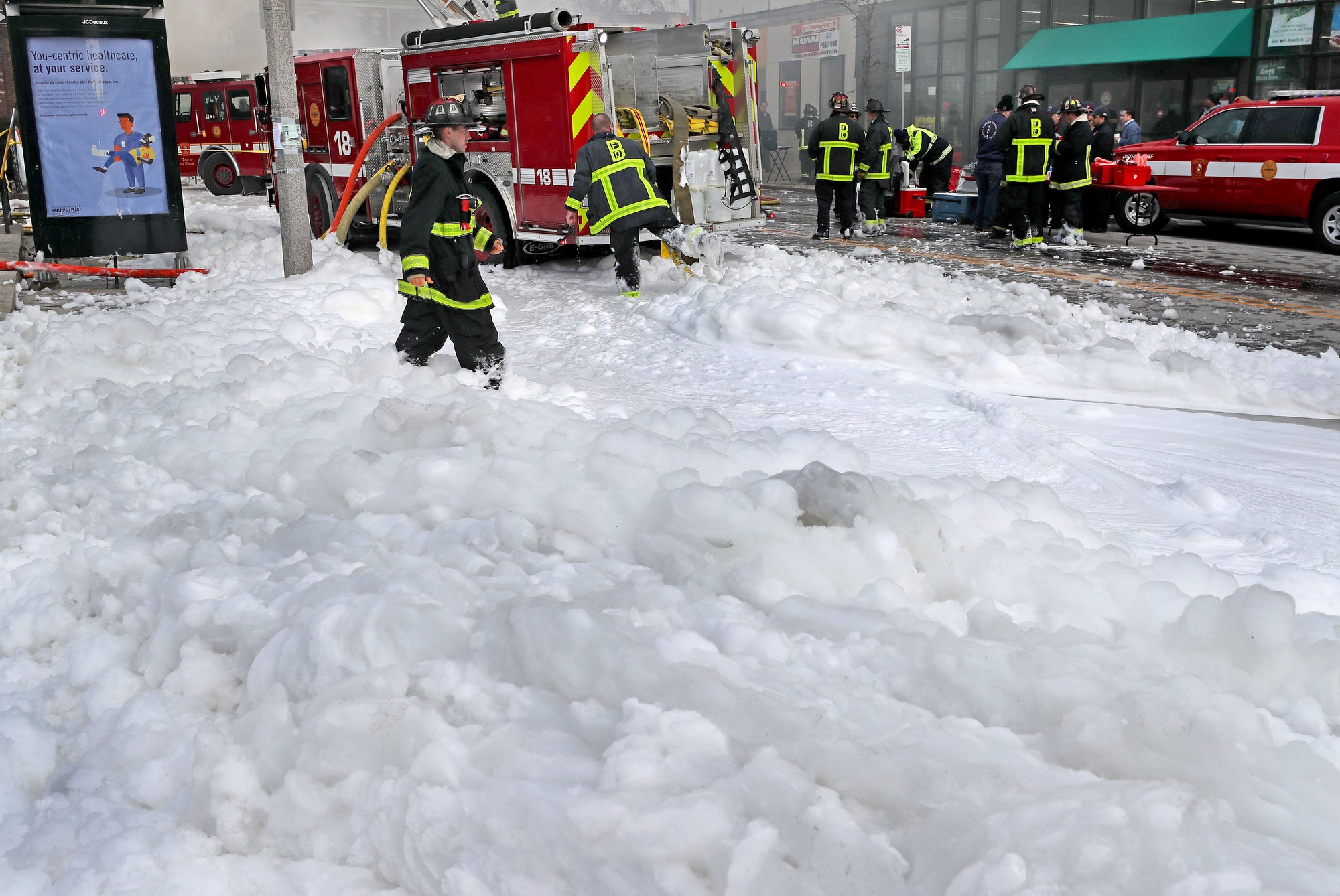The Toxic Chemicals Hiding in Our Homes, and How We Can Reduce Them
A fundamental environmental law, the Toxic Substances Control Act, can help protect us from harmful chemicals. But first, the government needs to fully enforce it.

Our world is awash in thousands of chemicals. And though many of them have improved our lives, a lax regulatory system, coupled with chemical industry greed and malfeasance, means that many other chemicals are harming our bodies and the environment. PFAS, for example, are found in most Americans’ blood and are linked to cancers, thyroid disorders, and developmental disorders in fetuses, among other things.
The good news is the government has the authority to protect us; for example, there’s a critical law called the Toxic Substances Control Act, or TSCA, that is designed to protect us all from harmful chemicals. Earthjustice is fighting in the courts and on the Hill to force government agencies to use this law more effectively — and take industry to task for putting harmful chemicals on the market. Our efforts are part of an overall goal to reduce the harm that toxic chemicals inflict on people, particularly the most vulnerable among us, and to fundamentally transform the way the Environmental Protection Agency (EPA) regulates chemicals in this country.
What are some toxic chemicals found in everyday products?
Because of weak and unenforced regulations, toxic chemicals show up just about everywhere in our lives: from our food and our clothing, to inside our homes and bodies. Worse, the cumulative impact of being exposed to multiple chemicals throughout our lives, coupled with socioeconomic disadvantages and existing health issues, can negatively impact our health and quality of life.
Here are just a few toxic chemicals we come across often in our everyday lives:
- PFAS. Short for per- and polyfluoroalkyl substances, “PFAS” are a class of more than 12,000 chemicals found in food packaging, carpets, nonstick pans, personal care products like shampoo and sunscreen, and even firefighting foam. The U.S. Geological Survey recently found that almost half of the nation’s tap water is estimated to contain PFAS.
- Lead. A neurologic toxin that is especially harmful to pregnant women and children because it causes developmental problems, lead contamination is sadly still prevalent in the United States. Though leaded gas in cars was banned more than 25 years ago, lead is currently found and used in water pipes, wheel weights, aviation gasoline, and gun ammunition. Millions of people still drink lead-contaminated water through deteriorating lead pipelines.
- Trichloroethylene. A toxic, cancer-causing chemical used in stain removers, degreasers, and a range of industrial processes, companies have exposed Earthjustice clients to groundwater plumes contaminated with trichloroethylene, or TCE, that can be miles long. There are TCE hotspots all over the country.
- Ethylene Oxide. A mutagenic, flammable gas used to make products like antifreeze, plastics, and detergents, and to sterilize medical equipment, ethylene oxide is one of the most toxic air pollutants that the EPA regulates. Workers and fence line communities are particularly at risk: The EPA found that registered uses of ethylene oxide present up to a 1 in 17 lifetime cancer risk for workers inside sterilization facilities.

Drinking water is one of the most common routes of exposure to PFAS. PFAS have polluted the tap water of at least 16 million people in 33 states and Puerto Rico, as well as groundwater in at least 38 states. (Yipeng Ge / Getty Images)
How are chemicals regulated in the U.S.?
Many environmental laws address exposure to toxic chemicals, but the Toxic Substances Control Act (TSCA) is the only law designed to regulate toxic chemicals from cradle to grave. Passed in 1976, this law was imperfect from the start: It gave a pass to the approximately 62,000 chemicals already on the market without showing they were safe. And it allowed the government to approve new chemicals without undergoing any safety review.

Design by Casey Chin
In 2016, Congress overhauled TSCA to make it more effective. Yet these changes do not guarantee the law will actually protect people from toxic exposures. The federal government must actually use its new authorities to ensure that protective policies are adopted and then enforced.
In 2023, strategic legal and policy work by Earthjustice to strengthen implementation of TSCA resulted in a particularly epic string of toxic wins, including a decision by the EPA to propose a complete ban on trichlorethylene (TCE), a potent carcinogen used in stain removers for rugs, metal cleaners and degreasers that’s getting into drinking water sources.
But TSCA can be even more protective. The EPA continues to allow companies to conceal crucial health and safety information about chemicals under review. It also approves hundreds of new chemicals each year without getting public input, which is illegal. As a result of this dangerous conduct, the EPA consistently underestimates the harmful effects of chemicals, leaving the rest of us stuck dealing with deadly chemicals in our bodies and environment.

Lead-based paint disintegrates over time and contaminates dust throughout homes or schools; lead in soil around these buildings also leads to children’s exposure. (M.R. / CC BY-ND 2.0)
Why isn’t the government regulating chemicals to its full ability?
Industry meddling. Redacted chemical assessments. Razor-thin approval deadlines. These are just some of the ways that the chemical industry has pressured the EPA for decades to overrule scientists and prevent staff from using TSCA to warn the public about harmful chemicals and ban or strictly limit their use. In 2022, chemical companies and the American Chemistry Council even went so far as to challenge a mere advisory published by the EPA that provided critical information and guidance to communities whose water has been contaminated with PFAS.
These practices follow a decades-old playbook by harmful industries that also includes covering up evidence that an industry’s products cause harm in the first place. (See also cigarettes and fossil fuels.)
How is Earthjustice working to strengthen chemical regulations?
When TSCA was strengthened in 2016 after years of community advocacy, Earthjustice took advantage of the opportunity by filing lawsuits to secure strong legal precedents that would force regulators to hold chemical companies accountable for dumping harmful chemicals into our environment.
More recently, Earthjustice successfully pushed the EPA to issue a proposal to revise TSCA rules that provides foundational guidelines for better protecting workers and communities from toxic chemicals. The proposal includes a critical requirement that the EPA consider risks to fenceline communities, which was hotly disputed by the EPA during the Trump Administration.
Finally, Earthjustice continues to push the government to use TSCA to its full extent to protect the public from adverse health impacts caused by ongoing exposure to toxic chemicals. For example, after the EPA proposed a complete ban on trichlorethylene (TCE), which confirmed that the agency has authority under TSCA to impose a full chemical ban to eliminate unreasonable risk, we began pressing the EPA to ban many other chemicals that are undergoing TSCA review.

Firefighters walk through foam used to extinguish a four alarm fire in the Dorchester neighborhood of Boston in 2018. Firefighting foam is one source of PFAS contamination in the environment. (David L. Ryan / The Boston Globe via Getty Images)
Is Earthjustice doing anything else to limit our exposure to harmful chemicals?
Earthjustice fights for the full use of existing environmental laws, like TSCA, to stop chemical manufacturers from releasing harmful chemicals into our food, air, and water, and to monitor the harmful chemicals already on the market.
Our work has included pushing the EPA to establish safer PFAS disposal regulations so that federal agencies like the Department of Defense must stop burning PFAS, which releases carcinogens and other deadly chemicals. We also successfully pushed the EPA announce a mandate to replace all lead pipes within 10 years, which deliver drinking water to almost 22 million people in the U.S. Finally, our successful litigation in 2023 convinced a U.S. District Court to order the EPA to strengthen proposed ethylene oxide emissions rules and protect communities in dozens of states and Puerto Rico.

A cut lead pipe is pulled from a dig site for testing at a home in Royal Oak, Michigan. (Carlos Osorio / AP)
How can I help keep toxic chemicals off the market?
Everyone has the right to live, play, and work in safe environments and to use safe products. The EPA already has the legal authority to stop the chemical onslaught, but the biggest challenge is persuading the agency to have the backbone to use its authority to protect consumers, communities, workers, and the environment, and reject chemical industry pressure.
Currently, there are several ways that you can push the EPA to strengthen toxic chemical regulations and make your voice heard including:
- Urge the EPA to adopt provisions that will help remove lead from drinking water.
- Support the EPA’s proposed ban of trichloroethylene, asking it to finish the job and finalize the rule as soon as possible.
- Send a letter to the EPA to add PFAS to the Superfund list, and remove them from our daily lives.
Finally, you can use the form below to tell the EPA to strengthen the Toxic Substances Control Act, the rule that addresses all of these ways that people are exposed to and harmed by these chemicals.
Jessica is a former award-winning journalist. She enjoys wild places and dispensing justice, so she considers her job here to be a pretty amazing fit.
Earthjustice’s Toxic Exposure & Health Program uses the power of the law to ensure that all people have safe workplaces, neighborhoods, and schools; have access to safe drinking water and food; and live in homes that are free of hazardous chemicals.